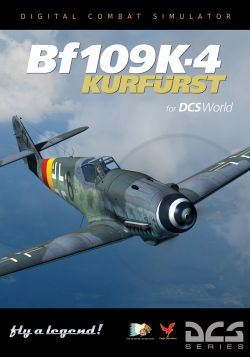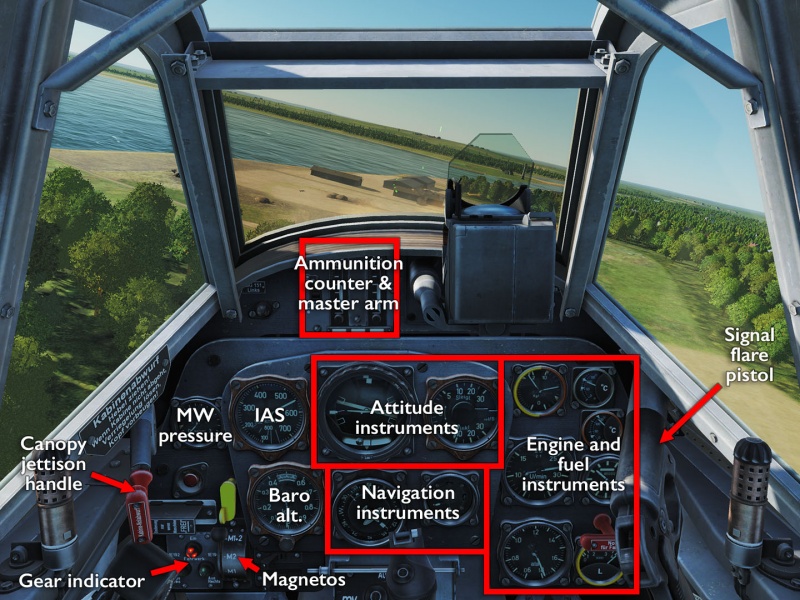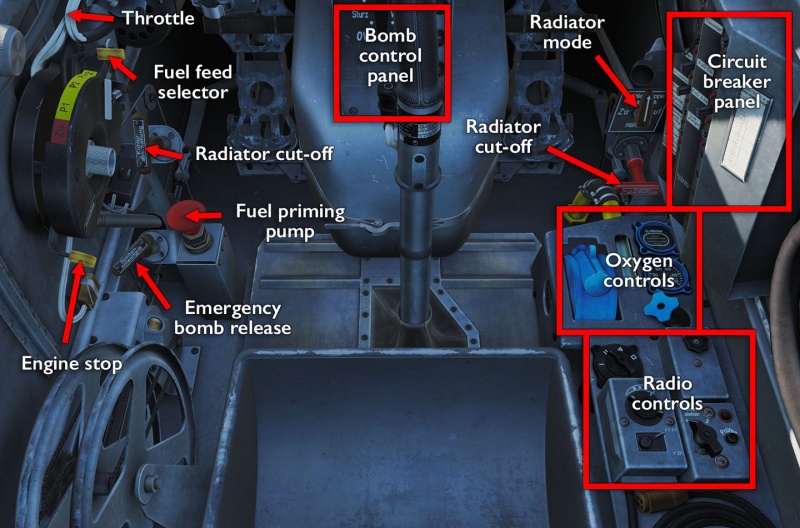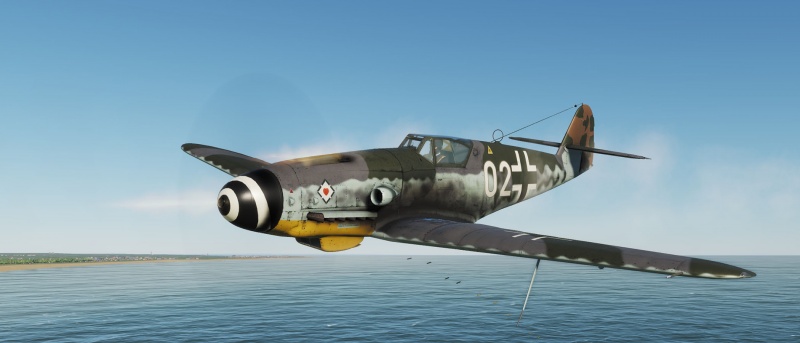Bf 109 K-4 Kurfürst
MESSERSCHMITT!! — it is an obligatory line in any kind of WWII depiction, and many a bloody (forum) wars have been fought over whether it or the Spitfire is the more iconic aircraft. Almost as many wars have been started over whether or not it should be called the Me or the Bf 109. It's complicated…
The K-4 “Kurfürst” model depicted in DCS World was a late-war introduction to counter the updated Spits, Hurricanes, and Mustangs clogging the sky on the heels of the Italian and Normandy invasions, as a supplement to the Fw 190:s that had been introduced with the intent of replacing it.
Features
The Bf 109 K-4 was designed as an interceptor, with a later role expansion to bomber escort and lighter ground-attack tasks. As such, it has:
- An automated engine governor that relieves you of having to worry about balancing propeller RPM and pitch/thrust — just a single throttle to push around.
- A MW-50 Water-Methanol Injection system to boost the supercharger and squeeze more power out of the engine.
- Two 13mm wing-mounted cannons and a 30mm nose cannon, with in-cockpit ammunition counters.
- The ANF-2 homing receiver, to find your way back to the airfield.
- A narrow landing gear that makes landings… interesting.
- A ridiculously torque:y engine that will make itself known during take-off.
Comes with the built-in Bf 109 Challenge campaign.
Flying the Bf 109 K-4
The Bf 109 K-4 is very stable aircraft, which is a good thing since the only trimming option is on the elevators — rolling and yawing has to be managed by the pilot at all times. It is capable of attaining speeds where compressibility-induced loss of control and high-speed stalls become an issue, but will generally make enough noise to warn the pilot of what is about to happen. At the lower end of the spectrum, the Bf 109 is reasonably resistant, and easy to recover from, low-speed stalls and again usually gives ample warning.
The only two major problems are starts and landings. On take-off, the Bf 109 has a very strong desire to violently flip over to the left, stall, and crash upside-down, and also to rapidly pitch up, stall and crash on its tail. Both needs to be countered with forceful yet precise stick input. On landing, the narrow landing-gear arrangement will make it very sensitive to any kind of side slip, bank angle, or uneven loading and will once again happily flip over if proper airflow and brake balance is not maintained down the entire length of the runway.
Cockpit overview
Getting into the air
From the pilot's point of view, getting the Bf 109 K-4 started is a fairly automated (or at least delegated) process. It requires some outside aid, but the starter systems keep track of some of the mechanical timing to get good rotation on the engine. To get off the ground:
- Turn on the front row of circuit breakers.
- Turn the radiator dial (on the right) and engine governor (a tiny switch at the base of the throttle box) to automatic mode.
- Turn on oxygen.
- Select both fuel pumps (lever to P1+P2) and magnetos (lever to M1+2).
- Use the big red plunger to pump up the prime the engine at 2kg/cm² fuel pressure.
- Move the throttle to idle.
- Request that the ground crew run the starter crank while you flip up the cover on the starter switch (just above the gear indicator lights).
- After 10 seconds of cranking, hold the starter switch until the engine catches.
- Adjust and idle the engine at 2000 RPM until it is heated up.
- Wobble your way to the runway by using toe braking and the tail wheel locking handle.
- Make sure flaps are retracted, that trim is neutral, and that you are aligned with the runway with the tail wheel locked. Also, close the canopy.
- Carefully throttle up, but keep the stick fully to the right to counter the torque at all times.
The Bf 109 will lift itself off the ground, so no need to force it. In fact, it is more likely that you will need to push the nose down as the aircraft wants to leap into the air. Trimming nose down will not fully counter this and will just leave the aircraft dangerously over-trimmed as you pick up speed in the air. Instead, use stick input, but again, keep the stick fully to the right at take-off or you will snap-roll to the left and have a bad day the moment the wheels leave the ground. Ease off the stick as the plane starts to respond to the inputs and assumes a neutral flight position on its own.
Shooting something
Without any fancy sighting systems, getting the Bf 109 K-4 ready to shoot is utterly trivial.
- Dial in the amount of gun ammo you are carrying (three notches unless you have done something silly).
- Flip the master arm switch next to the ammo counters up to arm the 13mm machine guns.
- Flip the gun/rocket switch beneath the magneto selector to the left to arm the 30mm cannon.
- Flip the trigger safety on the stick.
- Aim.
- Press the gun and/or cannon triggers to fire.
Links and files
- Vehicle Size Chart for sight adjustments.
- Chuck's Bf.109K-4 Kurfürst guide at Mudspike.
- DCS: Bf 109 K-4 Kurfurst in the DCS shop.
Related DCS modules
- Bf 109 K-4 Jagdflieger Campaign by Reflected Simulations
More information
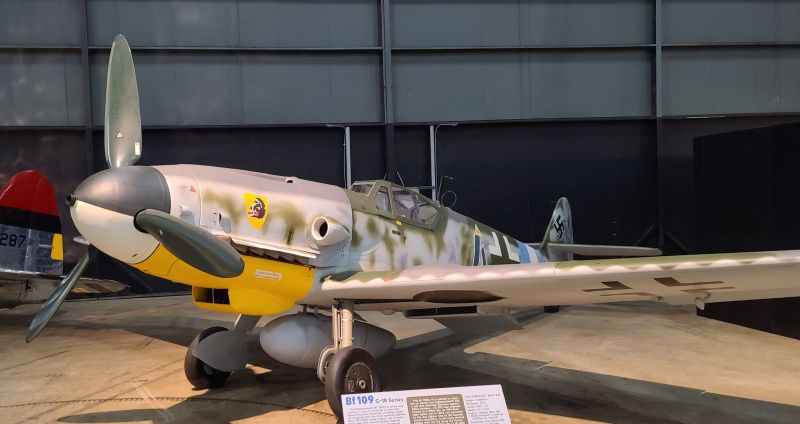
- Messerschmitt Bf 109 on wikpedia.
- Bunyap's Test Flight - DCS: Bf 109 K-4 Kurfürst video series.
- Taming taildraggers — an essay, Part 1, Part 2, and Part 3.



